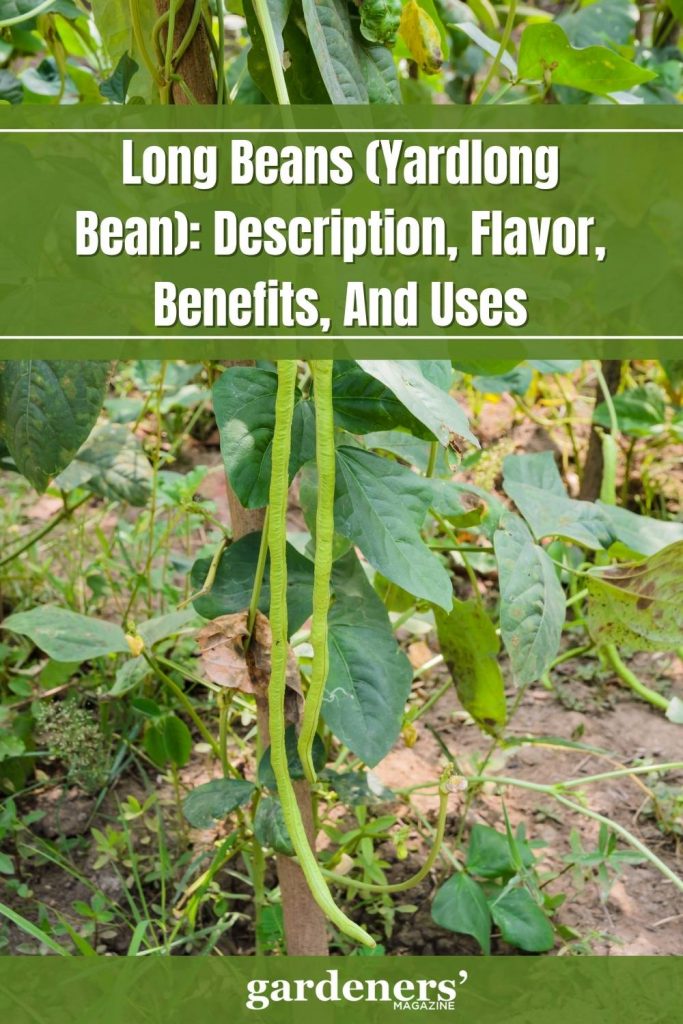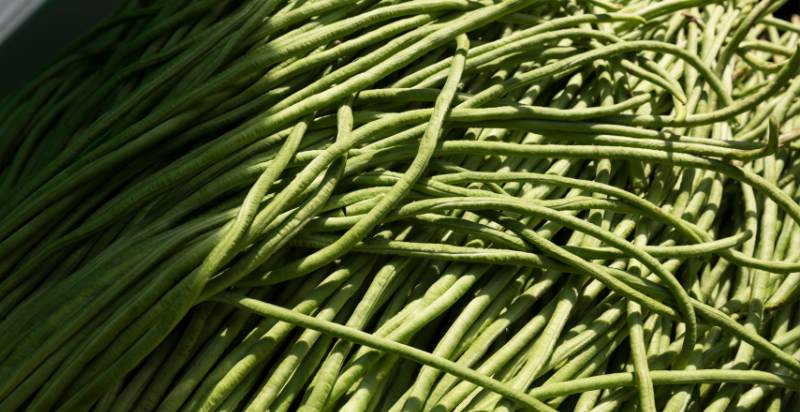Long beans, commonly known as yardlong beans or Chinese long beans, are a type of legume widely popular in Asian cuisine. They have a mild flavor similar to green beans and can be used in place of them in recipes for soups, stir-fries, curries and more. The name “long bean” comes from their elongated shape, which can grow up to three feet long. They include vitamins A, C, K, and B6, among other necessary vitamins and minerals. Additionally a rich source of protein and nutritional fiber are long beans. Here is all the information you require about long beans.
What are Long Beans?
Long beans are a variety of legume that is native to Southeast Asia. They have a mild flavor similar to green beans and can be used in place of them in recipes for soups, stir-fries, curries and more. The name “long bean” comes from their elongated shape, which can grow up to three feet long. History and Origin of Long Beans?
Long beans, also known as cowpeas, are a type of bean that has been eaten in Southeast Asia for centuries. Native to India and Africa, long beans were introduced to other parts of the world during the 16th century when Portuguese sailors brought them to Latin America. Long beans spread from there to other regions, including Europe and North America.
In Asia, long beans are commonly used in stir-fries with garlic or ginger and can be steamed or boiled before use. In India, they are part of some traditional dishes such as thoran (a coconut-based dish). Additionally, long beans are often fried with spices for an extra layer of flavor.

Growing Conditions of Long Beans:
Long beans thrive between 65 and 85 degrees Fahrenheit (18 and 29 degrees Celsius) and love warm conditions. Although they may tolerate mild shade, they grow best in direct sunlight. To keep moisture and nutrients in the soil, it should be well-drained and supplemented with compost or other organic material.
Fertilizer is also recommended for optimal growth; apply an all-purpose fertilizer such as 10-10-10 or 5-10-5. Water regularly to ensure the soil remains moist but not soggy, and mulch around the plants to retain moisture and control weeds.
Harvest long beans when they reach 8 – 10 inches (20 – 25 cm). Pick them often to encourage bushier growth. Long beans can be eaten fresh, steamed, stir-fried, or boiled. They have a mild flavor similar to green beans and are an excellent source of Vitamin C.
Cultivation of Long Beans:
The ideal time to plant long beans is when the soil temperature reaches at least 65°F (18°C), as they are a warm-season crop. In rows that are 24 to 36 inches apart, sow the seeds 2 inches apart. Compost or aged manure should be added in large quantities to the soil, which should also be well-drained. Drink plenty of water, particularly in dry times. Throughout the growing season, fertilize every 4-6 weeks with a balanced fertilizer.
Harvesting long beans can begin 40 to 50 days after planting when the pods are tender and 6-10 inches long. Use shears to cut the stems of the beans, leaving at least 2-3 inches of stem attached. Long beans can be stored in the refrigerator for up to 1 week and are best when eaten fresh.
Health Benefits of Long Beans:
Long beans are a fantastic source of vital vitamins and minerals that can support the maintenance of your body’s health. They are a good source of iron, magnesium, potassium, thiamin, riboflavin, niacin, and vitamins A, C, E, and K. These vitamins and minerals support a stronger immune system and healthy skin. Additionally, long beans are a wonderful source of dietary fiber, which supports digestive health and prolongs feelings of fullness.
Long beans are advantageous for people with diabetes and other metabolic problems since they can lower cholesterol and control blood sugar levels.
Long beans also contain antioxidants, which guard cells against free radical damage and may even help lower the chance of developing some cancers. A fantastic approach to guarantee you obtain all the nutrients your body needs for optimum health and wellness is to eat long beans.
Where are Long Beans Grown and Harvested?
Long beans are grown and harvested mainly in Asia, with China being the largest producer. They can also grow in India, Thailand, Vietnam, Indonesia, Malaysia, and the Philippines. In the United States, they are primarily grown in Florida and California.
Long beans require warm temperatures to grow well and plenty of sunlight for optimal yields. They are typically planted in the spring and harvested throughout the summer months. The plants are most commonly grown in raised beds, mounded rows, or on trellises.
Long beans can be harvested when they reach their full size or picked at various growth stages for different uses. If you pick them young, they can be used as green beans, while fully mature beans are best for drying and canning.

What is the Flavor Profile of the Long Beans?
Long Beans have a sweet, starchy flavor that is reminiscent of potatoes. They can be cooked in savory and sweet dishes, adding a unique flavor to any dish. They are often compared to green beans for their crunchy texture and mild flavor. Their natural sweetness balances out the salty flavors of spices like garlic and ginger when used in savory dishes while adding a subtle complexity to sweeter dishes.
Where can the Best Quality Long Beans be found?
The best quality Long Beans can be found in specialty food stores or online stores. They are also available in some farmer’s markets and grocery stores. When purchasing Long Beans, look for firm and bright green ones. Avoid any that appear limp or discolored. For optimal flavor, use fresh beans within two days of purchasing.
How do you Store Long Beans?
Long beans should be stored in an airtight container or a plastic bag. Please place them in the refrigerator, which will keep them for up to two weeks. Store long beans in the freezer after blanching them first for longer storage. Blanching is briefly boiling vegetables to preserve their color, flavor, and texture.
Bring a pot of water to a boil to blanch long beans and add the beans to it for 3 minutes. Remove the beans with a slotted spoon and place them in an ice bath or cold water. Once cooled, drain the beans and pat them dry with paper towels before packing them into freezer-safe containers. When ready to use, thaw the long beans overnight in the refrigerator and use them as desired.
How to use Long Beans in Recipes?
Long beans are delicious in stir-fries, curries, soups, stews, and salads. They can be cooked in various ways, such as sautéed, steamed, blanched, boiled or even deep-fried! Long beans pair well with garlic and ginger for a fragrant dish sure to please everyone.
For a flavorful stir-fry, add long beans to a hot wok with the oil and seasonings you choose. Or, for an easy side dish, blanch the beans in boiling water for 3 minutes until tender-crisp and then sprinkle with sesame seeds and sea salt. Long beans also add to soups and stews, adding texture and flavor.
When preparing long beans, cut off both ends before cooking them. This will help keep the shape intact and create a more pleasant eating experience.
Conclusion:
Long beans can be a great addition to many dishes. Whether you’re looking for an easy side dish or a flavorful stir-fry, long beans are sure to please. With their versatile flavor and texture, long beans can be cooked in various ways and seasoned to your tastes. So next time you’re at the market, add some long beans to your shopping list and get ready to enjoy a delicious meal.
- Everything You Wanted to Know About Red Tamarillos - June 2, 2025
- A Guide to Tulips: Everything You Need to Know & More… - June 2, 2025
- Guanabana: Description, Flavor, Benefits, And Uses - May 27, 2025

3 thoughts on “Long Beans (Yardlong Bean): Description, Flavor, Benefits, And Uses”
Comments are closed.